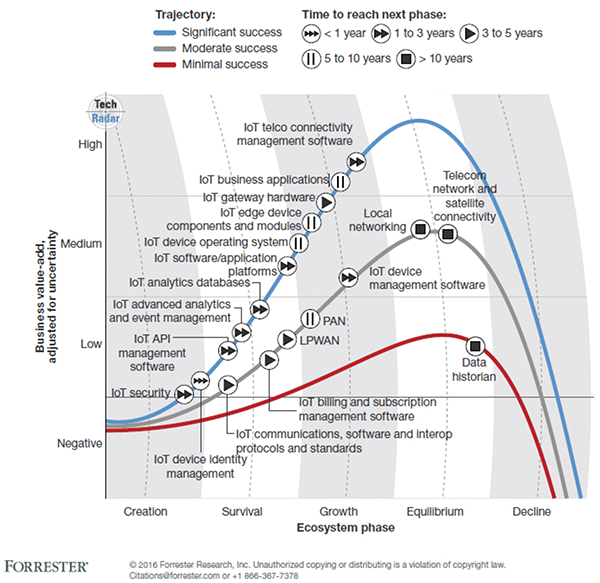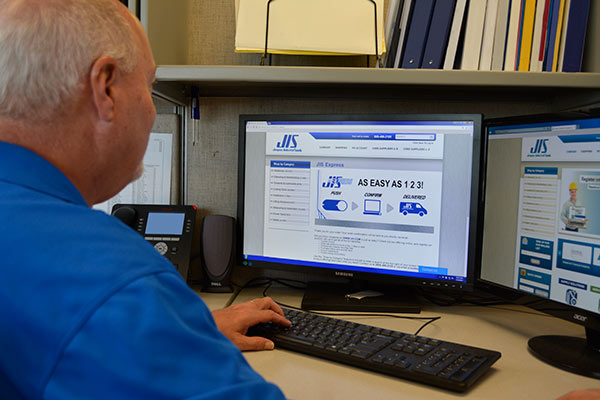ERP News – worldwide – erpnews.com, Source: Forbes – For the third year in a row, the Internet of Things has dominated CES. More than 900 companies out of 3,800 at the show said they had Internet of Things products. Andrew Begin at Mirum observed that the IoT has “caught fire in a big way” and Perry Simpson at Direct Marketing predicted that the IoT will solidify “from marketing dream to full on marketing channel.”

But not everybody was impressed: “IoT remains mired in smart light bulbs, net-connected cameras and wireless speakers,” opined Andrew Tarantola atEngadget, “the same sorts of bland, iterative use cases we’ve been seeing since the term was first coined.” Pam Baker at FierceBigData complained that “IoT data products were again in overdrive, many in outright overkill, and the same problems with data deluge still existed,” and Todd Hixon offered this onForbes: “The fundamental problem is, there is still no killer app for IOT: something a large group of customers really care about and just have to have.”
So what’s the state-of-the-IoT and where is it going? Here’s a summary of data and predictions from Forrester, Machina Research, the World Economic Forum (WEF), Gartner, and IDC (see a list of specific sources at the end of this post).
Forrester
In a new TechRadar report, Forrester states that “Internet of Things (IoT) technologies are diverse and immature.” Most of the 19 IoT technologies identified in the report are in “Survival and Growth phase today,” and the development of standards and robust security is key to their success: “Standards are nascent, as vendors are only a couple of years into the process of creating general-purpose interoperability standards. And IoT security technologies are still in the Creation phase, with no established products.”
Forrester says that the IoT is a “business-led trend,” and reports that 23% of enterprises use the IoT, with another 29% planning to do so within 12 months. They use the IoT to transform their business models by moving from one-time product transactions to ongoing product-as-a-service relationships, optimize utilization of physical and financial assets, and to create new forms of customer engagement.
In its 2016 predictions document, Forrester saw in its crystal ball these 2016 developments:
–At least one company will coach Wall Street investors on how to follow their evolution from product to service revenues, just as Adobe and Microsoft have as they made the switch from selling perpetual licenses to selling software-as-a-service (SaaS).
–Enterprise customers and consumers will automatically ask product sellers about the sensor capabilities in the mobile app for a new machine tool or a refrigerator.
–One or more companies will report the number of connected products they have in operation with customers, plus the number of connected customers they serve.
–IoT will create massive volumes of time-series data and IoT analytics will become a specialized category and discipline.
–Home insurance companies will begin to broadly promote smart home discounts.
–10% of drivers will use new auto “appcessories”—smartphone-enabled devices for their cars—that retrofit some connected car features to older cars.
Machina Research
–We will start to feel the first heartbeat of the new IoT economy and the shift from selling products to providing service as at least one Fortune 500 company will fundamentally change how it values, underwrites or trades assets based on the data generated by IoT.
–The need for an IoT push from a C-level executive will be met as at least one Fortune 500 company will appoint a Chief IoT Officer.
–Corrective analytics—a security option to apply automated corrective measures based on actual real-time outcomes rather than predicted or prescriptive actions—will emerge as a fail-safe approach across a range of sectors.
–A household name in IoT will file for bankruptcy while at least one will be bought for a price that breezes through the 100x revenue multiple.
–At least one of the major Low-Power, Wide-Area (LPWA) technologies today will effectively be rendered redundant but there will still be more technology fragmentation.
–Chinese players will shake up the IoT landscape, increasing market share significantly across semiconductors, software platforms, smart cities deployments, and integrated solutions especially.
–Digital twins and digital avatars will proliferate, virtualizing the real world will be incredibly popular, and augmented reality will move out of its niches and see much wider adoption.
–There will be no meaningful commercial trials of IoT implementations based on the Blockchain.
–At least one major IoT player will face significant regulatory issues.
World Economic Forum (WEF)
The WEF surveyed 800 leaders on 21 tipping points—moments when specific technological shifts hit mainstream society—expected to be enabled by software by 2025:
–92.1% believe that 10% of people will wear clothes connected to the Internet.
–89.2% believe that 1 trillion sensors will be connected to the Internet.
–85.5% believe 10% of reading glasses will be connected to the Internet.
–69.9% believe that over 50% of internet traffic to homes will go to appliances and devices.
Gartner
–Spending on IoT services will reach of $235 billion in 2016, up 22% from 2015.
–In terms of hardware spending, spending on consumer applications will total $546 billion, and the use of connected things in the enterprise will drive $868 billion in 2016.
– 6.4 billion connected things will be in use worldwide in 2016, up 30% from 2015, reaching 20.8 billion by 2020.
–In 2016, 5.5 million new things will get connected every day.
–More than half of major new business processes and systems will incorporate some element of the Internet of Things (IoT) by 2020.
–Through 2018, 75% of IoT projects will take up to twice as long as planned.
–By 2020, a black market exceeding $5 billion will exist to sell fake sensor and video data for enabling criminal activity and protecting personal privacy.
By 2020, addressing compromises in IoT security will have increased security costs to 20% of annual security budgets, from less than one percent in 2015.
IDC
–Worldwide spending on IoT will grow at a 17% compound annual growth rate (CAGR) from $698.6 billion in 2015 to nearly $1.3 trillion in 2019.
–40% of the worldwide total IoT spending in 2015 came from Asia/Pacific.
–By 2018, there will be 22 billion IoT devices installed, driving the development of over 200,000 new IoT apps and services.
–The worldwide wearable device market will reach a total of 111.1 million units shipped in 2016, up 44.4% from the 80 million units shipped in 2015. By 2019, total shipments will reach 214.6 million units, a five-year compound annual growth rate (CAGR) of 28%.
–By 2018, 66% of networks will have an IoT security breach.
–By 2020, 10% of all attacks will target IoT systems.
–By 2018, 60% of Global 1000 companies will integrate IT & Operations Technology (OT) at the technology, process, security & organization levels to fully realize the value of their IoT investments.
–2016 will become the “Year of the IoT Developer,” with 250,000 unique IoT applications developed by 2020.
–By 2018, 20% of all IoT intelligent gateways will have “container technology” for packaging IoT application code in a thin containerized environment thus accelerating IoT microservices.
–By 2020, enterprise IoT deployments will be focused on international expansion with Asia & Europe leading, North America following from a distance.
–By 2019, 45% of IoT-created data will be stored, processed, analyzed and acted upon close to, or at the edge, of the network.
–By 2018, 80% of IoT smart device vendors in China will be eliminated through competition, and the market will be reshuffled for a better landscape.
–By 2018, 16% of the population will be Millennials and be accelerating IoT adoption due to their reality of a connected world.
–Local public safety organizations will spend $20.7 billion in 2016 on IoT-enabled solutions.
Sources
Machina Research
WEF
“Deep Shift: 21 Ways Software Will Transform Global Society” (PDF)
Gartner
Gartner Says 6.4 Billion Connected “Things” Will Be in Use in 2016, Up 30 Percent From 2015
Predicts 2016: Unexpected Implications Arising From the Internet of Things
IDC
IDC’s Look Ahead at The Internet of Things
News Source: Forbes – http://www.forbes.com/sites/gilpress/2016/01/27/internet-of-things-iot-predictions-from-forrester-machina-research-wef-gartner-idc/#7357c366be64




